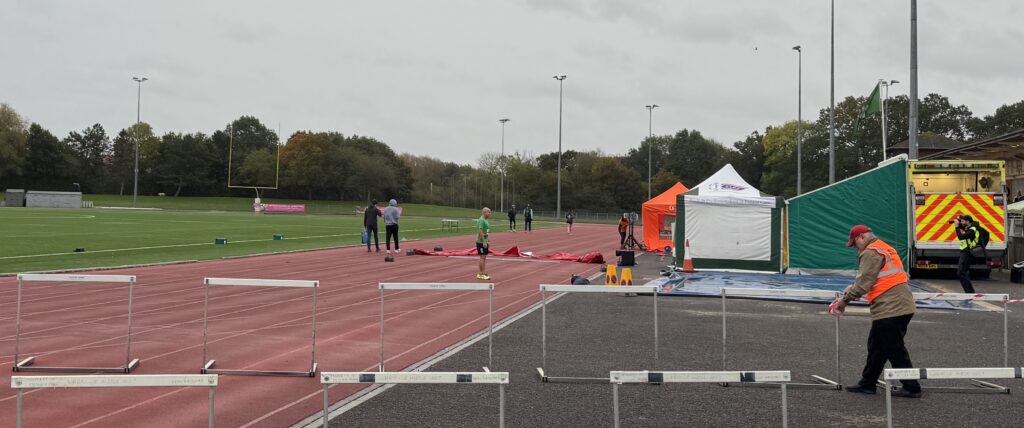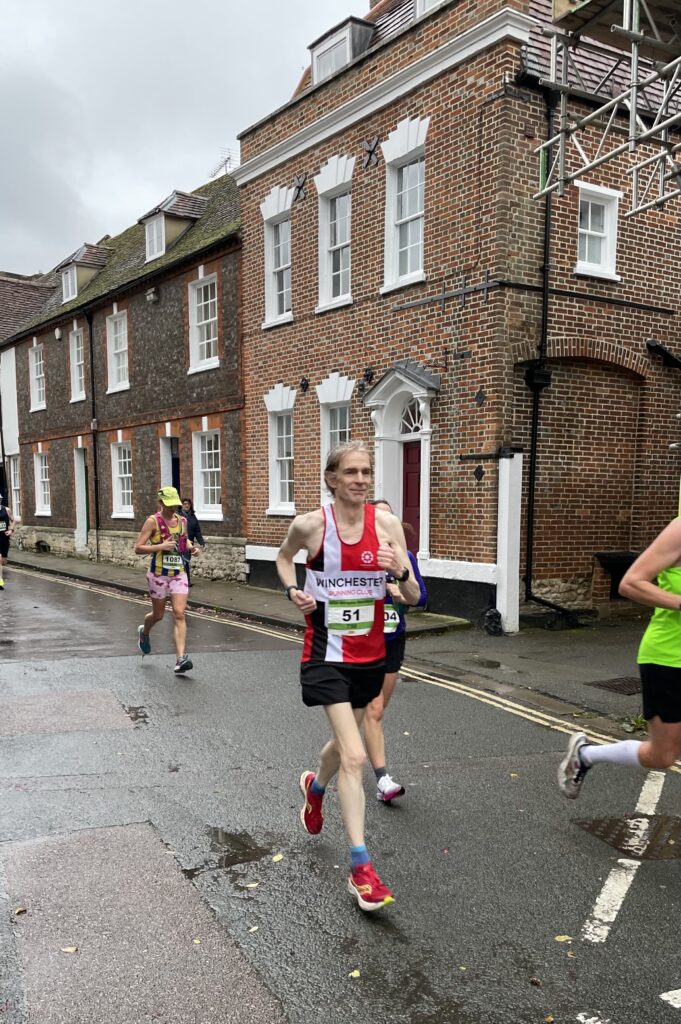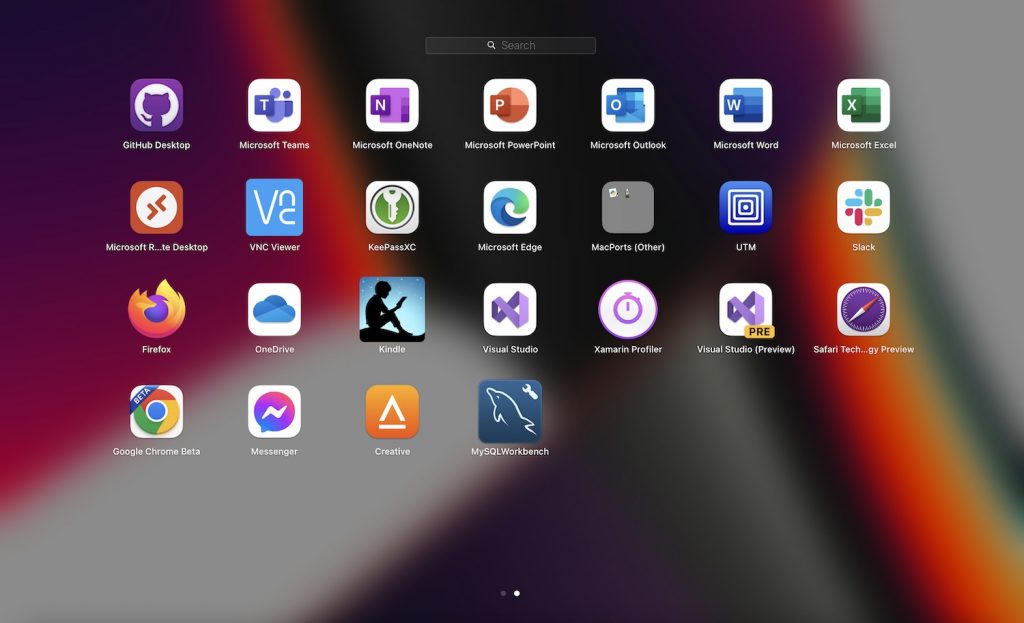Note: this is a rather personal post and probably not interesting for most people.
2023 was a year of running for me but what next? For runners the marathon always beckons; the most famous races in the running calendar are marathons (London, Berlin, Boston, Chicago, New York and Tokyo) and I felt that if I was ever going to run one, it should be soon as I am an older runner.
In 2023 I ran two half marathons but I knew that a marathon was a much harder challenge. In February 2024 I signed up for the Abingdon Marathon, 20th October 2024. I chose Abingdon because it was flat, and somewhat familiar as I grew up near there and it was my late grandmother’s home.
My son gave me a book called Advanced Marathoning by Pete Pfitzinger and Scott Douglas and known affectionately as Pfitz in the running community. The preface says, “the runners for whom we wrote this book have goals such as setting a personal best, qualifying for Boston, or running faster than they did 10 years ago.” A bit ambitious for me but then again, I did want to run London one day and “good for age” looked like my best bet for getting in.
The book was excellent for me because it is science-based and the rationale for everything in it is explained in matter of fact terms. There are many ways to train for a marathon and our knowledge of how best to do it continues to evolve; but the schedules in this book are well proven. I picked the easiest training schedule which is called 18/55: an 18 week schedule in the which the maximum miles per week is 55. I counted back from my marathon date and put the mid-June starting week in my diary.
I had to pick a target pace since the schedule paces are derived from this. There were two factors. One, what was I capable of doing. Two, what did I need for London. I picked 8:30 per mile; somewhat arbitrary but I hoped it would work on both counts.
In a table of “sample long-run paces” on page 14 of the book, 8:30 is the slowest pace given for “marathon goal pace.” I felt therefore that I was picking the slowest pace which the authors felt was in scope for the book, though this is not explicit.
Incidentally I switched mentally from per KM pace to per mile pace because this book and many other marathon training guides and discussions primarily use per mile paces. The KM equivalent is always given but there is a bit of friction. I also came to prefer using the longer distance for my mental segments.
Note that you are not meant to start even the 18 week schedule from scratch. “These schedules are challenging right from the start and get harder as your marathon approaches,” say the authors. You need to be in what one might call half marathon fitness before you start.
Following the schedule
Although the schedule is 18/55 most weeks are fewer than 55 miles. The mean is about 40.5 miles. It is still a big commitment. Let’s say one averages about a 9:30 pace in the training; that is about 6:45 hours running per week, spread over 5 training sessions. Add on a bit of time for changing and showering and it is a lot to fit around a working week, and demanding for family and friends too.
When I trained for a half marathon I did so quite informally. A long run on Sunday and a daily jog, including parkrun on Saturday. I was sufficiently scared of the marathon that I decided to follow the schedule as closely as I could.
That said, I did not follow it exactly. For one thing, I carried on with parkrun and mostly ignored what the schedule offered for Saturdays. Second, I had races scheduled and these conflicted with the Sunday long runs. I worked around this either by adding a second run after the race (since the races were shorter than the scheduled long runs), or sometimes I just treated the race as the long run.
I did make sure to include four key long runs in the schedule. These were three 20 mile runs, and an 18 mile run with 14 miles at marathon pace. For most of these runs I actually did a bit more than the scheduled distance; it is quite hard to do them exactly unless you do the same route out and back and turn back home at half way. I preferred to do circular routes and in practice my longest run was between 22 and 23 miles.
I entered all the training runs as workouts on my Garmin. My “execution score” which measures how well I conformed to the scheduled pace was typically poor. One reason is that I live in a hilly area and it is hard to keep a pace. Second, I found it difficult to run slow enough for the recovery, warm up and cool down sections. Third, I found it hard to make the target pace especially early on in the training.
It sounds cruel, but the training runs often have you running at the fastest pace at the end of the run. The Pfitz “marathon pace” sessions for example get you to run say 5 miles at easy pace then 8 miles at marathon pace. The idea is to adapt your body to be able to maintain the pace when fatigued.
I was fortunate not to suffer much illness during the period. I picked up a bug when on holiday in July. I had to stop training for a few days but then resumed.
Core strength training and avoiding injury
Having suffered from plantar fasciitis and a second foot injury I was conscious of the risk during intensive training. There is a chapter in the Pfitz book called supplementary training and I regarded this as equally important as the training schedule. The reason is simple: if you do not do the core strength training you are likely to get injured, and if injured, you cannot train. A further benefit is that the strength training directly improves your running.
I followed the section called Core stability training and combined the exercises with others I had discovered, developing a workout that took around 40 minutes to complete, and doing this most days.
I did not experience any major issues with feet, calves or hamstrings during the training or indeed during the race and I feel that this is thanks to this exercise programme.
Tapering
The taper period in my schedule was the last three weeks. 20 mile run on the Sunday before, then a gradual reduction in mileage. Taper is known to be a difficult time and I had some little issues. One is that I had booked a half marathon race two weeks before, when the schedule said to do a 17 mile long run. I decided to run the half marathon as a training run, not at race pace.
The coach at my running club supported this, telling me an anecdote about a woman who missed qualifying for the commonwealth games after winning a half marathon two weeks before the marathon at which selection was decided. Her rival came second in the half, but won the second race and was duly selected.
I did not doubt the quality of the advice and started determined to run no faster than 8:15 per mile. With the race atmosphere and amongst the other runners I found myself running at 7:58. I slowed a little and did the second mile at 8:01. Then I was keeping pace with a friend from my club and chatting. He pulled ahead of me and I could not help myself, I stayed with him, then a few miles later passed in front. Mile 7 I did at 7:12. In the end I finished in 1:39:43 which was a half marathon PB for me – but what about the taper? What about my lack of self discipline?
After that I followed the taper schedule religiously, even skipping parkrun 8 days before the marathon because it was designated a rest day. It was a big change for me though, after 16 weeks of hard running. It felt like losing fitness.
In the week before the race, there was another issue. Weather. The forecast for 20th October was rain and strong winds, gusting up to 40 mph or so. The Great South Run in Portsmouth, scheduled for the same day, was cancelled. People signed up for Abingdon or the Yorkshire marathon (again same day) posted on Reddit about how to run in bad weather. It was hard not to be anxious. Perhaps the event would be called off, and all my training in vain. Perhaps a howling gale would make getting a good time impossible.
In the event, the weather was poor but not as bad as predicted. Phew.
The race
I did my best not to leave anything to chance. The day before, I ate a big spaghetti lunch before heading to the race hotel in Abingdon. Then a light evening meal with no alcohol, just a big glass of orange juice. On the morning, I got up at 6.00am and ate two bread rolls with jam. The idea is to go into the race well stocked up with the right kind of nutrition and well hydrated, but not to have toilet issues. Therefore one has breakfast three hours before the race.
I decided to run with minimum baggage. This meant leaving my smartphone behind, relying on the drink stations for water, and carrying only gels. I had running shorts with two deep pockets in which I stuffed 7 SIS isotonic gels, the same ones I had used in training – following the principle, nothing new on race day.
The course starts on the race track at Tilsley Park to the north of Abingdon. I arrived at about 7:45am and had a look round. It was somewhat bleak and the inflatable start/finish arch was not yet pumped up.

The venue was well organised though and complete with changing rooms. There was light rain but no gales. I got ready, and chatted to some of the other runners. The time slipped away; I had intended to do a short warm-up jog but a long queue for the bag drop meant I ran out of time. Headed to the track at around 8:45am; the sound system was not working very well and it was hard to hear the pre-race brief. The runners intending to finish in under 2:30 were encouraged to start near the front but any plans to sort other runners into pace groups seemed to be abandoned.
A few minutes later we were off. It is hard to describe but this was an emotional moment. I realise I am only a mid-pack club runner but 18 weeks intensive training leading up to this made it a big deal for me.
There was a little bit of congestion but this was a smallish race (fewer than 1000 runners in the end, some who had booked perhaps did not turn up because of the weather forecast) and it was not a big problem.
It did feel odd trying not to run too fast. Sam Murphy writes in her book Run your best marathon:
Research has shown that when marathon runners begin the race at a pace that is just 2 per cent quicker than their practised goal pace, they flounder over the final 6 miles. The reason this advice is so often repeated is because it is so rarely heeded.
Running a race induces something similar to flight or fight response where the stress of the occasion enables the body to out-perform. The race atmosphere and one’s determination to do a good time drives you to run as fast as you can; yet one knows that holding back is vital. It is a mental battle. “This feels peculiar, trying not to run too fast” I said to another runner and we chatted. A side-effect of deliberately slowing your pace is that you have more breath for talking.
But what was my target pace? I set it originally at 8:30. Calculators like VDOT said that based on my half marathon two weeks before, I could do 7:55 but I felt that was risky and over-optimistic. Nevertheless I had decided to try and go a bit faster than 8:30. I kept a close eye on my Garmin. If the pace went up above 8:15 I consciously slowed down. If it went below 8:30 I tried to speed up.
The race begins with a run east and then south into Abingdon. At about 5 miles I passed the house where my grandmother used to live, in the beautiful old town.

Then you run out of town, and start a two-lap section where you run through a village, on into Milton business park, and back through a pretty village called Sutton Courtenay (where Eric Blair, also known as George Orwell, is buried).
The first 10 miles were a breeze. I chatted to another runner who said he was targeting a similar time to mine, around 3:40. Had he run a marathon before? Oh yes, he ran Manchester marathon in April in 3:18. You will be well ahead of me then, I said; but he thought he had not kept up his fitness. We ran together for bit, then he went ahead as expected. However he told me that I looked fit which was nice of him!
As it turned out I met him again in the latter part of the race and ended up finishing a minute or two ahead.
During the two lap section you see mile signs for the second lap as well as the first; that is, you see a sign for 16 when you are really on mile 8 etc. I do not know if this was part of the reason but miles 10 to 13 seemed to take ages and I was beginning to feel a bit of fatigue. I was keen to get half way, telling myself that it was downhill after that.
Mile 13 appeared eventually and I entered what Pfitz calls the “no-mans land of the marathon. You’re already fairly tired and still have a long way to go.” The book says that this is where you can easily lose pace; but I did not. The reason was that I was keen to pass 20 miles – the moment at which, some say, the marathon really begins.
I am not sure what it is about 20 miles but it is the point at which many runners find themselves having to slow down. Often they say they “hit the wall” though what runners mean by this varies. Sometimes it means literally being unable to run any further, more often it means losing pace or entering a run/walk phase.
Pfitz brilliantly calls the last 6 miles “the most rewarding part of the marathon … this is when your long runs, during which you worked hard over the last stages, will really pay off. Now, you’re free to see what you’ve got … this is the the stretch that poorly prepared marathoners fear and well prepared marathoners relish.”
I think this is brilliant because it sets you up mentally to look forward to the last 6 miles, if you have followed one of the book’s schedules, making it less likely that your pace will fail.
In my case mile 22 was my fastest mile, the only one under 8:00 according to the Garmin. In general though, while I did not really speed up, I did not slow down either.
The last two miles though were tough. I was extremely fatigued. Then again, I knew I was within reach of my goal time and determined not to stop now. I was also concentrating on not falling over. The Abingdon marathon is run mostly on open roads and you have to move between road and pavement, it would be easy to trip over a kerb when fatigued and your running form is slipping.
I passed the 25 mile sign. Then I was on a half-closed road and the marshalls were saying “not far now.” I entered Tilsley Park and then back onto the track. 600m to go. Tried to put in a little burst of speed at the end though there was nobody to overtake, or trying to overtake me. Then it was done, and a boy scout apologetically handed me my medal, not being tall enough to reach up and place it around my neck.

I placed 485 out of 995 finishers, and was 14th out of 44 in my age group 60-69. My time was 3:37:16 which is a pace of 8:18 per mile; however I feel a sense of achievement which is out of proportion to the actual result.
It may also be true that keeping pace right to the end means that I could have gone faster; it is difficult to know but perhaps, next time, I will risk holding back a little bit less in the early miles.




